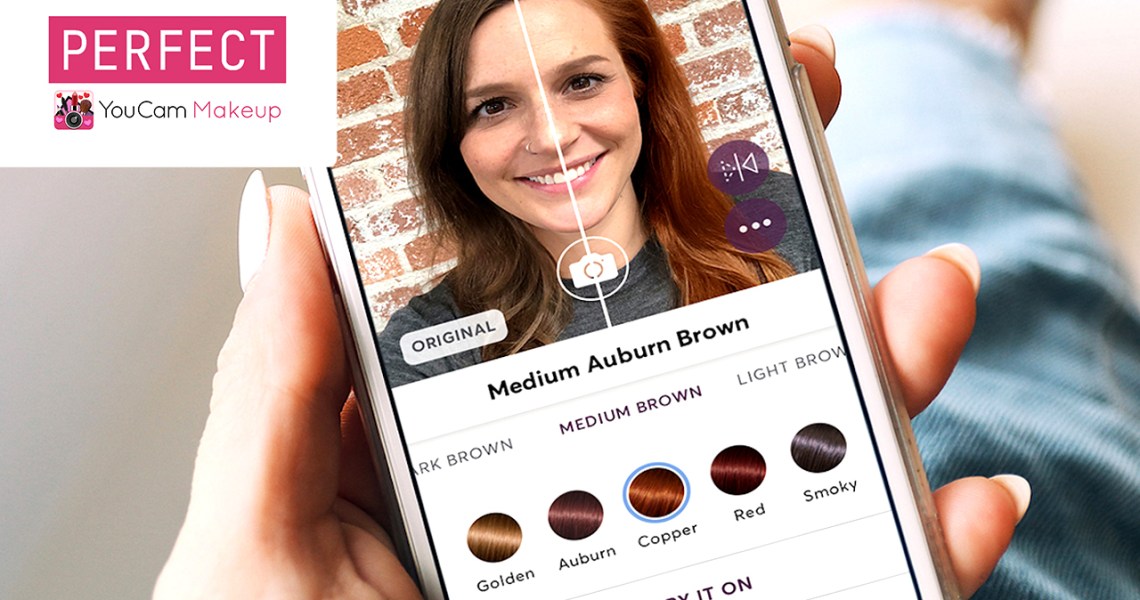As e-commerce is becoming the primary channel that customers turn to make a purchase, retailers are finding that the incorporation of AR and AI is crucial for replicating the high-touch environment of brick-and-mortar retail.
Madison Reed, the digitally-native hair-dye brand, has long integrated AR into its omnichannel strategy. But the use of AR became a particular strength for the company when it had to temporarily close its 20 salons, due to Covid-19. Amy Errett, Madison Reed founder and CEO, is clear in her vision that AR is not just a useful customer acquisition tool, but it’s also a customer retention tool.
In the latest edition of Glossy+ Talks, an exclusive series for Glossy+ members, Errett discussed how AR and AI can boost customer engagement, brand awareness and sales for a beauty brand; how it influences customer loyalty; and why the brands that are the most tech-savvy will thrive.
Glossy+ members can access the full video of the Talk and Amy Errett’s slides below.
This Glossy+ Talk was sponsored by Perfect Corp.
More than engagement
When AR and AI first emerged within the beauty industry, it was typically in the realm of entertainment and marketing, rather than as a means to reduce friction in a digital environment. But now that AR has matured as a technology, it’s facilitating more than a gamified experience.
“AR is an acquisition tool, at first, but it is also a retention tool, because we are constantly pushing the tool out to prospective or existing customers, showing them additional products in order to get them to reengage with us.”
“The customer’s ability to try on hair color, when they were [already used to] a positive experience trying on foundation or lip color, gave us a leg up, because they come into the brand having had that previous positive experience buying color cosmetics [after using AR]. We have not seen resistance to using our virtual try-on tools.”
Ad position: web_incontent_pos1
“There is some gamification to it, where people take selfies of themselves with something like red hair on one side and their natural color on the other, and ask their friends, ‘What should I order?’ It has created a more social event than other things around hair color would typically spur.”
How to balance focusing on AR and product
AR is not just a gimmick. Errett said that Madison Reed maintains a proprietary algorithm for color-matching, while leaving the core AR technology mechanics to its third-party partner. It takes that approach to many of the vendors the company uses, as Errett said Madison Reed is in the “client service business.”
“We have taken the position that we are not in the AI and AR business ourselves. We are in the hair color business. We are in the client service business. We are in the product development business. So we are always open to partnering with other folks who understand the nuances of photo recognition, who understand the nuances of virtual try-on tools.”
“Our AR tool lets people see through a virtual try-on what the shade looks like on them. They see one side with their natural hair color and the other side with their [Madison Reed] color. This is critical when it comes to a woman’s confidence about how she’s going to look after using our product. And we also have photo recognition, where the technology analyzes a selfie and recommends a shade based on the photo.”
“One thing every entrepreneur needs to know is that there is a [singular] pace and sequence of what you can do. You need to have a very clear picture of what is most useful to your client. We have five guiding principles and No. 1 is to get her color right. So everything that we do around AR and AI starts with that premise.”
Ad position: web_incontent_pos2
Applying AR in omnichannel
One of the biggest advantages of AR and AI is that, while the core technology is complex, the translation into omnichannel is relatively easy, said Errett. For Madison Reed, this means using AR not only online, but also within the company’s color bars to ensure that customers remain satisfied with their color.
“We have launched in new color bar salons a huge screen that sits on the wall, where you can look at your color advisor information, redo some things that you want and then ask, ‘Is this still the shade that I should be using?’ We’re now using AR and AI retention tools [in salons].”
“We use AR data to figure out what other hair colors we should formulate. What I mean by that, is if we see that we have a gap in our shade range, we go, formulate the color, then tell the customer that [we have it now] and form a waitlist.”
“Our technology is really predicated on first getting her the right color through AR, then helping her apply that color through videos and live consultation. AR and AI bridge the gap between [expectation and reality].”
Watch the video:
[s3mm type=”video” files=”plustalk-glossy-200812.mp4″ /]
See the slides:
















